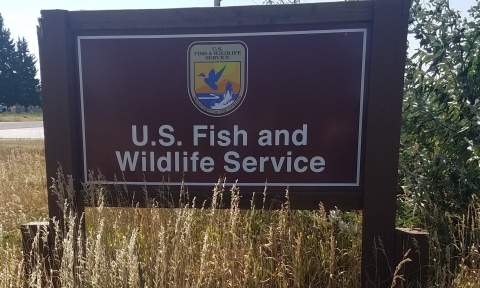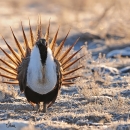About Us
The Wyoming Ecological Services Field Office provides biological advice to other federal and state agencies, industry, and members of the public concerning the conservation of fish and wildlife and their habitat that may be affected by development activities. Personnel assess the potential effects of projects to migratory birds, endangered species, anadromous fish, and wildlife. In Wyoming, these projects typically include activities such as agriculture, mining, utility lines, dredge and fill activities, dam and reservoir operations, oil leasing, and highway construction. The effects of contaminants on fish and wildlife are also assessed. Recommendations are then made regarding ways to avoid, minimize, or compensate for harmful impacts on fish and wildlife resources and their habitats. The primary areas of responsibility for the Wyoming Ecological Services Field Office include, contaminant assessments, endangered species, Federal project reviews, and wetlands conservation.
What We Do
The Wyoming Ecological Services Field Office provides biological advice to other federal and state agencies, industry, and members of the public concerning the conservation of fish and wildlife and their habitat that may be affected by development activities. Personnel assess the potential effects of projects to migratory birds, endangered species, anadromous fish, and wildlife. In Wyoming, these projects typically include activities such as agriculture, mining, wind energy, utility lines, dredge and fill activities, dam and reservoir operations, oil and gas leasing, and highway construction. The effects of contaminants on fish and wildlife are also assessed. Recommendations are then made regarding ways to avoid, minimize, or compensate for harmful impacts on fish and wildlife resources and their habitats.
Our Organization
Our Species
The Fish and Wildlife Service has several avenues of addressing and protecting species. Before a plant or animal species can receive protection under the Endangered Species Act, it must first be placed on the Federal list of endangered and threatened wildlife and plants. Protection under the Endangered Species Act includes endangered, threatened, and candidate species. The Service also maintains a list of plant and animals native to the United States that are candidates or proposed for possible addition to the Federal list. Endangered species are species that are in danger of extinction throughout all or a significant portion of its range. Threatened species are species likely to become endangered in the foreseeable future. Candidate species are those that the U.S. Fish & Wildlife Service (FWS) has sufficient information on their biological status and threats to propose them as endangered or threatened, but is precluded by other higher priority listing activities.
In addition to addressing the Species of Greatest Conservation Need, the Service’s Wyoming Ecological Services Field Office also encourages taking steps to protect and conserve species of concern for our office. Effective planning now can help ensure the long-term conservation of these species and remove threats that may contribute to the future need for listing under the Endangered Species Act.
Species Lists
For a species list of Federally listed Threatened and Endangered species, Candidate species, and Critical Habitat, please use the Fish & Wildlife Services IPaC website. The IPaC (Information, Planning, and Conservation) decision support system is a conservation planning tool for streamlining the environmental review process. It provides you, our partners, with the ability to explore the landscape and help you to site your projects in a way that minimizes conflicts with natural resources.
Projects and Research
The primary areas of responsibility for the Wyoming Ecological Services Field Office include listed species and consultations, listing and recovery, migratory birds and raptors, contaminant assessments, Federal project reviews, wind energy development projects, conservation plans, and wetlands.














